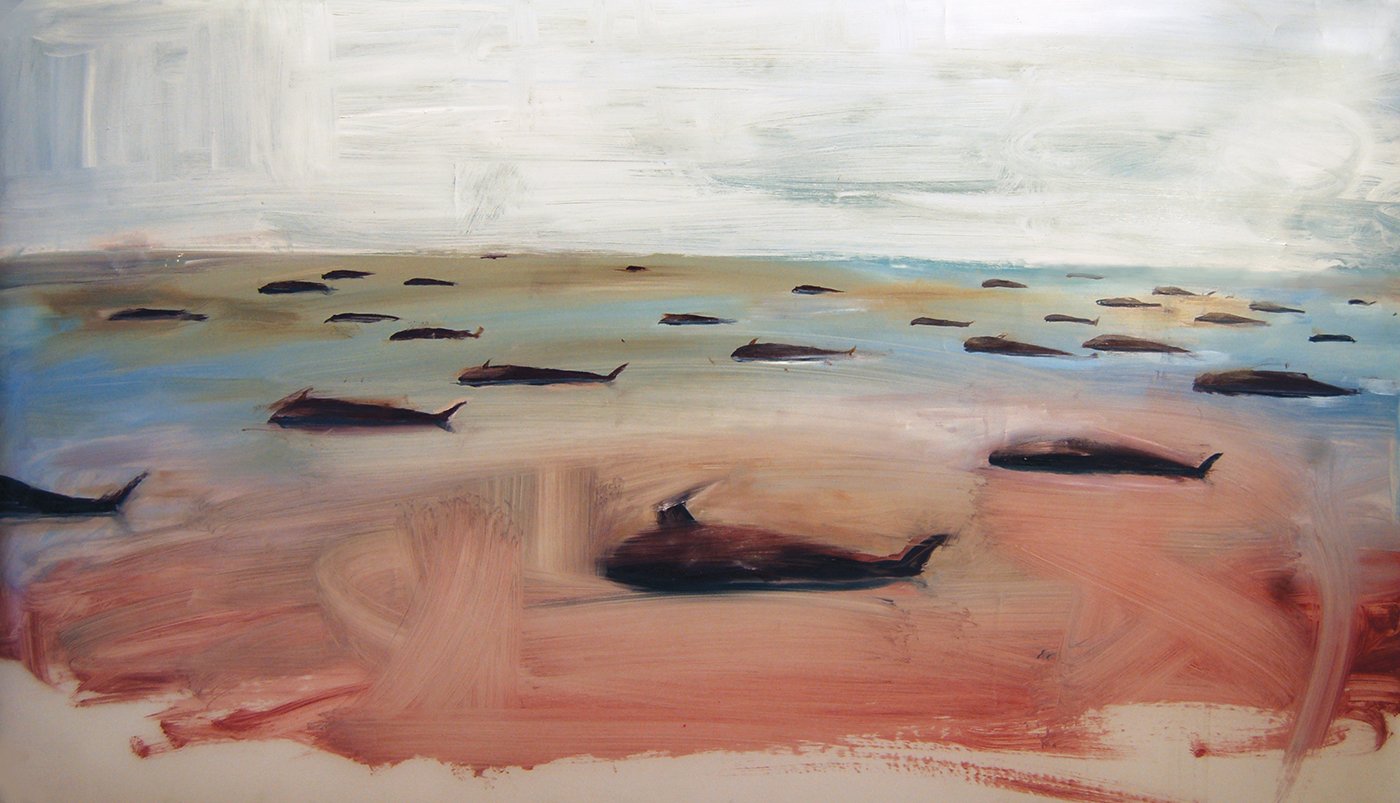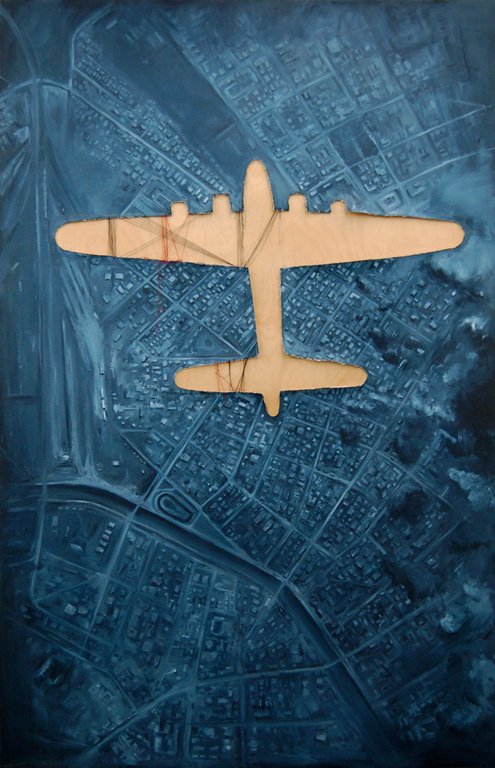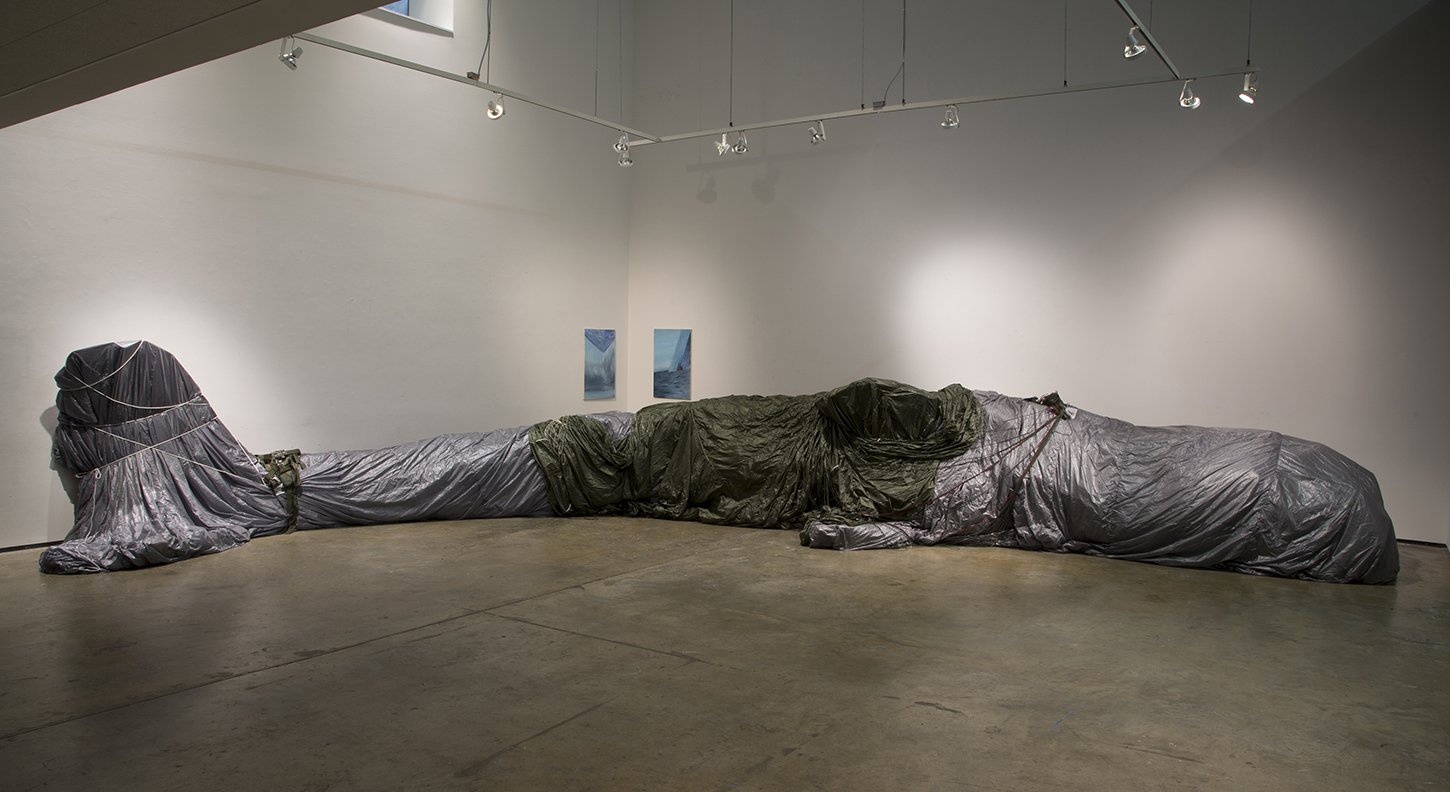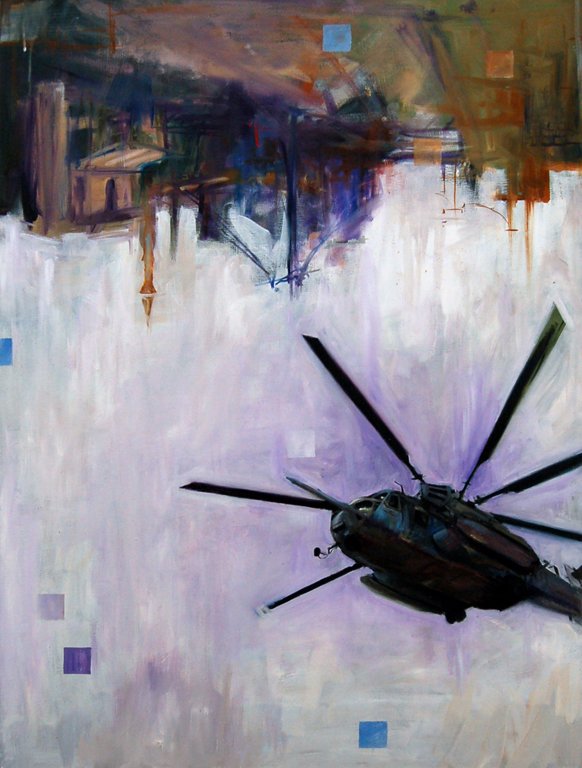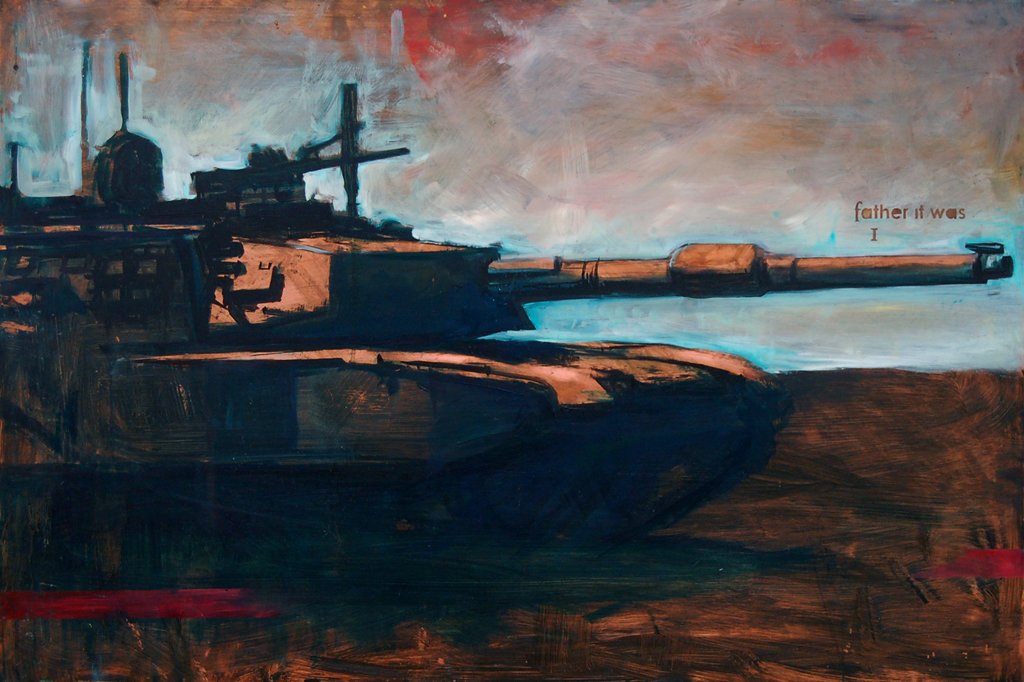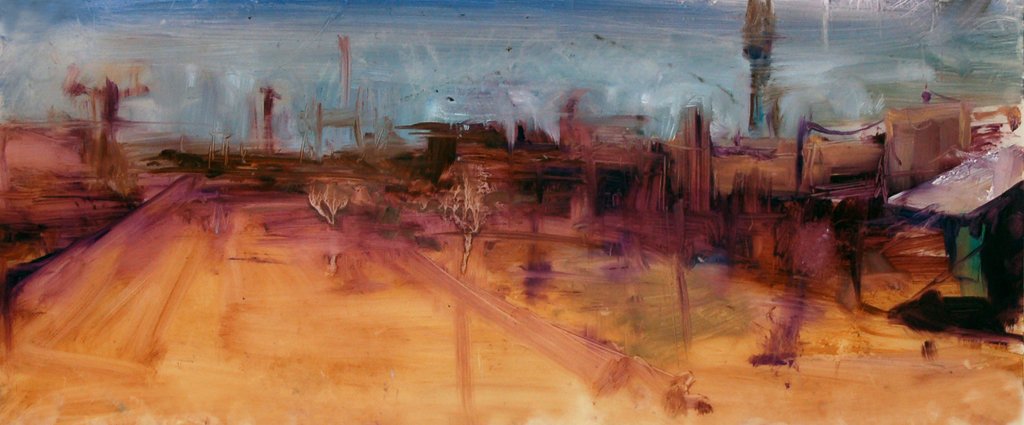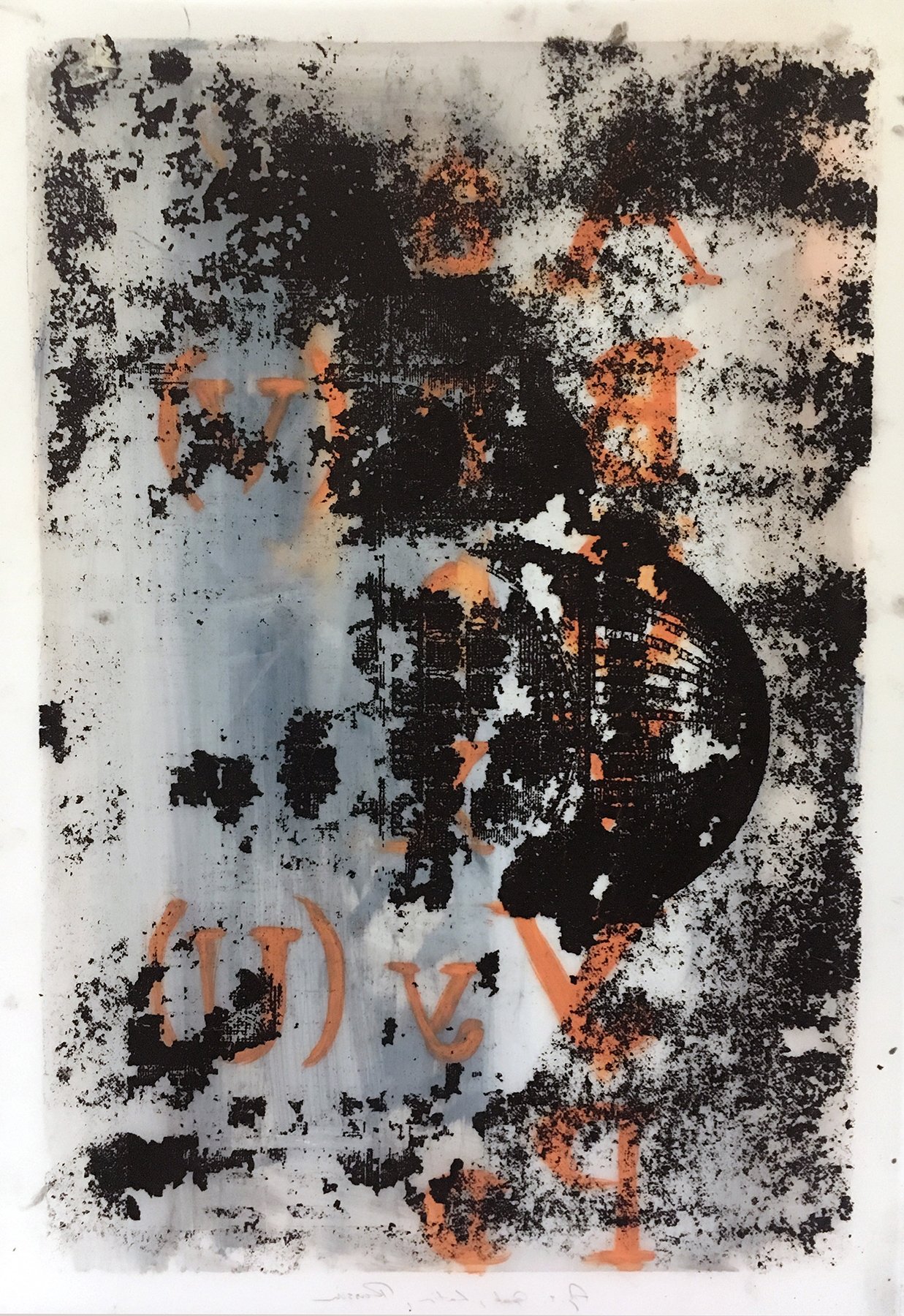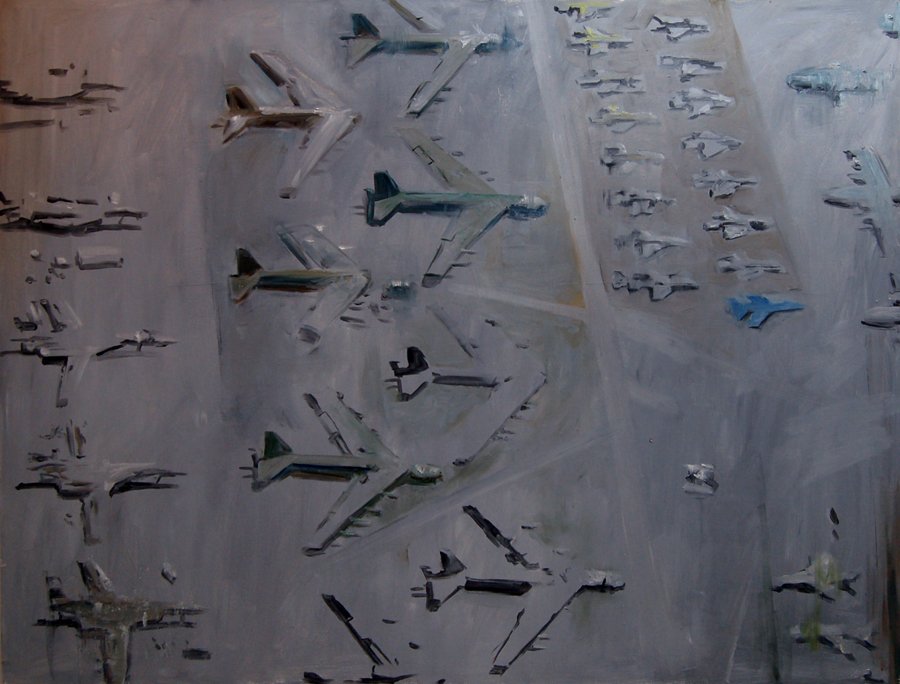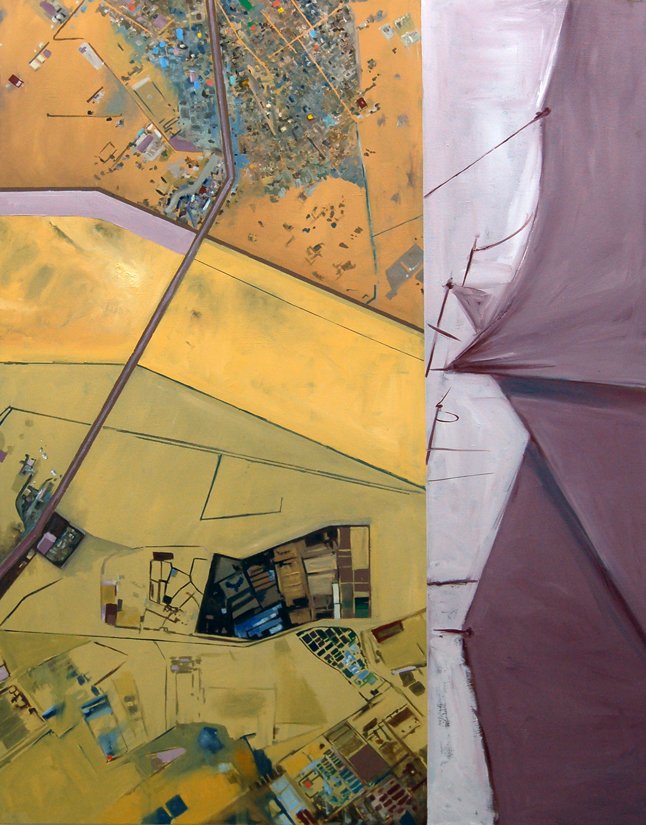Interview with Joe deVera
“Beachhead” from Sketches
Joe deVera emigrated from the Philippines in his youth and served in the U.S. Marines immediately after high school, completing two combat tours in Iraq. He is a graduate of both California State University, Fullerton, and Yale School of Art, and his exhibitions have been featured in galleries across the United States. He lives in St. Louis, where he is an Assistant Professor at the Sam Fox School of Design and Visual Art at Washington University. To learn more about his work, visit www.joedevera.net.
✶
“Father it was I” from Old Works
Could you tell us a little about your upbringing and your evolution as a young artist?
I grew up leaning into my creative side (regarding my interests) but never triangulated a real focus in art. I loved to draw, read, and write, so I worked that into my scholarship as much as possible as an undergrad. After some meandering through various majors at Cal State University, Fullerton, I later found that the most efficient way of studying multiple things without taking on multiple degree fields was through a sustained visual art scholarship (because of its inherent interdisciplinarity and autonomous trajectory). My interest grew while in college and throughout my deployments, [but] it wasn’t until the end of my service that I saw it as a career path.
Has the human impact of war and military service always been part of your artistic content?
No, not always (or at least, not consciously), not in the earlier stages of artmaking. But I think now, the easy answer would be yes, simply because artists tend to make work about their experiences, lives, and interests. That kind of resonance has a way of forcing itself into the work, one way or another.
“Border” from Topograph
Do you have any words of insight or encouragement for your younger artist self?
Lean into your demons. Fear is so limiting when it comes to painting.
Who were some of your early mentors in the arts? Who are your mentors now, or whose work are you influenced by?
I’ve taken a lot from various artists and writers. Along with the classic Rothkos and Richters were Joan Didion, W.G. Sebald, David Foster Wallace and innumerable poets. I cut my teeth slogging through miles of [William] Faulkner’s punctuation-barren books (which I initially hated, especially being a slow reader), but it taught me how to grind through the most important things. Funny enough, if I remember correctly, he mentioned his process to be similar, where he wrote out of compulsion, even when it wasn’t enjoyable or exciting. I’d like to think I’m the same way when it comes to painting.
I know it sounds cliché, but now, I look mainly toward my friends, colleagues, and contemporaries who are in the Arts, taking all the difficulties and complications within the scholarship (and the world, really) in stride and thriving on their own terms. I’ve also been obsessed with the artist Tishan Hsu for a bit, ever since I saw his exhibition at the Hammer (in LA) in 2020. He also talks about prioritizing freedom in his work that is outside of commercial spaces or dominant art institutions (he specifically calls it “Lab Mode”) and that’s something I’d like to emulate.
I still find a lot of inspiration from reading, though (even if it’s not very apparent in my work). Right now, I’m rereading some poems from Emily Skaja’s book Brute. I wish I could paint as she writes—spectral, but with gravity.
Do you have any background in collaborative pieces?
I’ve collaborated mainly with other [visual] artists. Recently, I was fortunate enough to work with Los Angeles-based Artist Jorge Mujica, and we made a modular steel sculpture/painting. This summer, I’ll be working on a small collaborative print project with writers and a printmaker. I can’t give out too many details yet, as we’re still in the early stages of planning—but I’ll be sure to give you an update!
“Badlands” from Sketches
A recent article about your work states that you joined the US Marines for “a little college money and an adventure” and that the Twin Towers fell while you were in boot camp. Your combat tours would soon follow. Would you say that this period of sudden change in your life continues to influence your art? If so, how?
Yes, definitely; perhaps in a similar way that these events shape and inform our identity, policies, and everyday lives (as Americans). That kind of generational trauma is going to permeate, especially if your scholarship deals with any introspective element.
“Davis-Monthan Boneyard” from Topograph
One reality that drew Collateral to your work was the interdisciplinary nature of it—how you acknowledge the connection between war, the commodification of humans, and environmental impact (in The Whale, for example). We’re interested in artists’ experiences in resisting the compartmentalization often foisted upon them: marginalized groups are often expected to create art limited to topics and styles found “acceptable” by dominant groups (i.e. veterans restricted to sharing work concerned only with combat and PTSD). What has your experience as a veteran/artist been like?
Expected. As you mention, there’s an explicit anticipation of working within the confines of predictable themes (Trauma, art therapy, etc.).
I remember, when proposing one of my first projects out of grad school to an institution that was interested in showing my work, I had to be very deliberate in communicating specific subjects in my practice, which deal with historiography, diaspora, immigration, cartography of empire, and so on, when they clearly wanted me to take a patriotic slant. I also found myself explaining more than once that, at times, my work doesn’t seek to make things easier to process (which is counterintuitive to the art therapy/healing part) and that it must reside somewhere difficult and impossible. And that’s the point.
Obviously, there are a lot of cultural stigmas that complicate the veteran identity, and it’s difficult to separate the history/zeitgeist that precedes and surrounds you, so it’s understandable.
“Memorandum” from Old Works
Do you think those cultural stigmas are changing for your generation, and might continue to change for emerging artists? If you do think it is changing, what do you think has been the catalyst(s)?
I’m skeptical that it’s changed much for my generation—at least from my experience. But hopefully, as the veteran arts community continues to grow to include more representation, rigor, and organization, there will be a greater chance to control narratives around the (expanded) veteran experience.
What do you think the most significant obstacle is, for you or for artists as a community, in preventing freedom in their creating?
In no order: time, resources, opportunity, and space. It’s no secret that stability and monetary duress are big limiting factors in any type of creative field. The great thing about having an independent/autonomous practice is that you can make your own terms for success and explore endeavors unique to your interests, but it can be difficult when there isn’t an overarching industry supporting your work (or at least not one that is accessible or standardized).
As an artist, do you ever find yourself pushing against a disinterest in and resistance to learning about the impacts of war?
Fortunately, I haven’t run into anything I would consider disinterested. Come to think of it, sometimes the opposite happens, where people are curious to learn about those subjects from a more personal view. Especially when it comes to my installations (The Whale, the Joshua Tree projects), I think there’s access to a vulnerability that happens more readily in certain spaces, which enables that kind of dialogue.
Does the response of an audience ever directly or indirectly impact your ongoing work or future projects?
Yes, of course. I think audience response (direct or indirect) is always needed and considered. Art requires dialogue—or else it dies (I think Rothko said something similar). I want my work to be in constant conversation with its audience, and in many ways, that kind of intimate interaction and interpretation gives it depth beyond even my original measure.
“Surface Tension” from Sketches
Where do you discover new ideas?
A lot of my ideas come directly from those interactions. And it’s not just from audience dialogue, but also by simply observing the work out in the world (as a sort of productive provocateur). In a way, it kind of points me in the direction of what can possibly come next.
Just curious: do you find yourself getting to work with other veteran artists now, as an instructor?
Yes—through the various other organizations and veteran groups, I do get to collaborate/be in dialogue with other artist-veterans. Veterans in the arts are a relatively small community (as ya’ll know firsthand, I’m sure), so we find dialogue often simply because we’ve connected so much through similar projects. As far as teaching veterans? Yes, to that, too—some of them wind up being in my classes! Although I rarely talk about my experiences as a veteran (and I assume it may be the same for them, at times) so those topics hardly come up unless it’s a discrete subject matter in their work.
Any specific artists/artwork that you’re drawn to right now from artistic communities with veteran backgrounds?
Jefferson Pinder is an Artist/Veteran whose work I’ve always been drawn to. I’m in awe of how he effortlessly moves between a multitude of genres (material, immaterial, performance, sculpture, print) and does so with equal parts power and sensitivity.
What’s on your horizon? Any openings or release dates to share?
“And All the King’s Men” exhibited at Yale’s Green Hall Gallery
I’m currently finishing my first year serving as a Tenure-Track Assistant Professor at Washington University in St. Louis, so I’ve devoted much of my immediate time settling into the community.
In early August, I’ll be working with Frontline Arts, a New Jersey-based printshop in Branchburg, NJ, where I’ll be organizing the (aforementioned) collaborative print project with other writers, poets and printmakers. I’ve also been awarded a residency at Yaddo in Saratoga Springs, NY, for the summer, as well as a MacDowell Fellowship in Petersborough, NH, for 2024-25.

